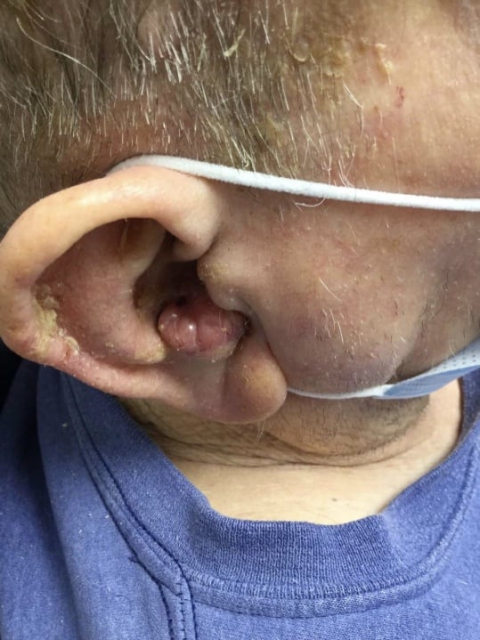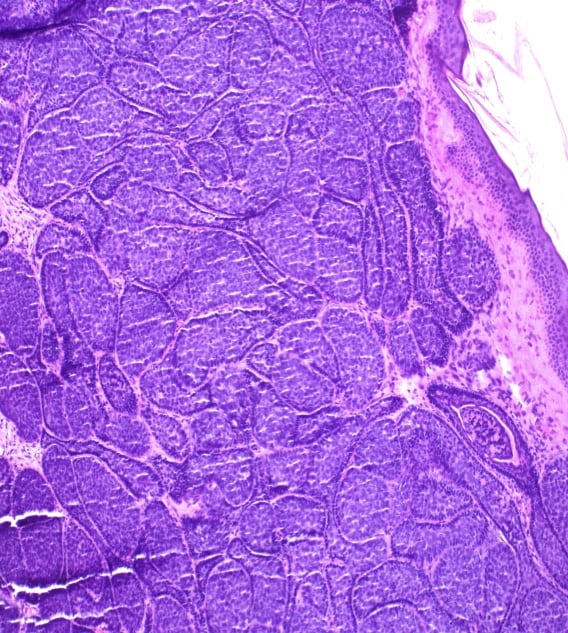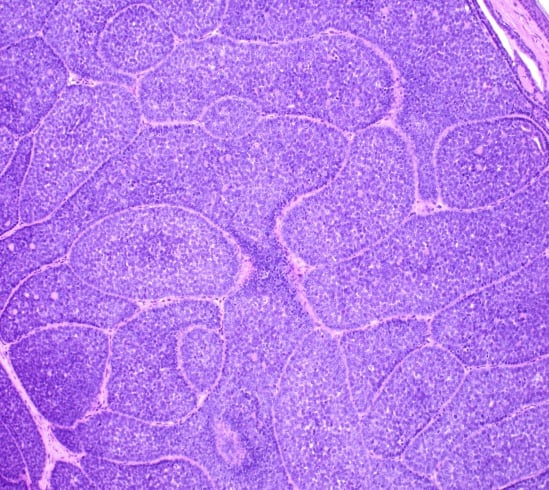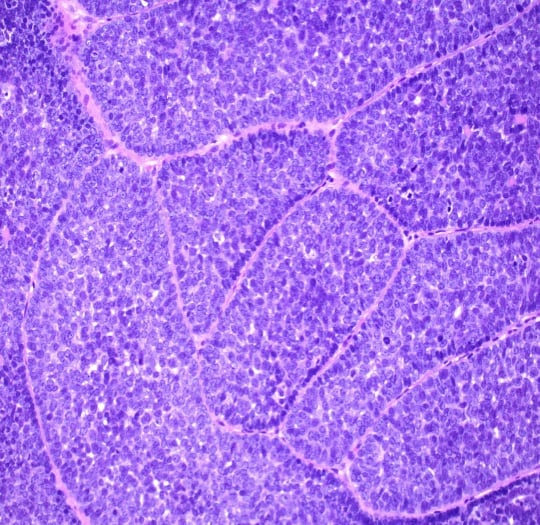HISTORY:
An 80+ year old male presented to clinic with a large, painful, ulcerated 2.5 cm nodule on his left conchal bowl. On further questioning he reported the growth present and enlarging for over a year. Biopsy was performed; pathology shown below.
Using the clinicopathologic correlation, what is your diagnosis?
DIAGNOSIS & CASE SUMMARY:
Cylindroma (Atypical). Cylindromas are rare, benign adnexal tumors most frequently located on the head and neck. They are most often solitary tumors or growths, but multiple, coalescing growths of cylindromas can be seen, known as “turban tumors.” Multiple occurrences are often linked to the Brooke-Spiegler syndrome. The Brooke-Spiegler syndrome is inherited as an irregular, autosomal dominant trait. Development of cylindromas has been linked to mutations in the CYLD gene and is also associated with trichoepithelomas and spiroadenomas. Sporatic tumors have shown MYB and NFIB fusions as those seen in adenoid cystic carcinomas. Although originally thought to be eccrine derived, more recent studies support an apocrine origin. Malignant transformation has been described in longstanding tumors and thus a spectrum of classification including “atypical” variants has arisen. Signs of early transformation / atypia include cellular atypia, high mitotic activity, and necrosis. Atypical and malignant variants are associated with locally aggressive behavior with metastastis being extraordinarily rare. Treatment with surgical excision is generally curative in non-metastatic cases.
HISTOLOGIC SUMMARY:
Compact nests of basaloid cells that fit together like a jigsaw puzzle, surrounded by thick basement membrane. The basaloid cells contain two groups of cells: undifferentiated peripheral palisading epithelial cells with small dark nuclei and centrally located differentiated ductal cells with large pale nuclei. There is focal cellular atypia and prominent mitotic figures warranting the designation of Atypical Cylindroma.
FOLLOW-UP:
The patient returned for treatment by surgical excision and the treatment has remained successful with no recurrence.



